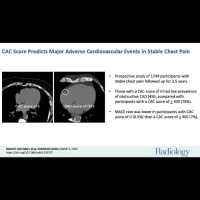A review of 17 primary prevention guidelines on adult cardiovascular risk assessment shows considerable variation among different recommendations on performing cardiovascular disease risk screening, risk stratification and treatment. Results are published in the Annals of Internal Medicine.
While the review shows consensus on performing cardiovascular disease risk screening as well as using risk stratification models, there is very little consensus on the ideal target population, the best risk prediction tool, screening strategy or treatment thresholds.
Lead researcher M.G. Myriam Hunink, MD, PhD, of Erasmus Medical Center in Rotterdam, The Netherlands, and colleagues used MEDLINE and CINAHL databases for guidelines that were published between May 3, 2009, and June 30, 2016. They also included websites of guideline development organisations in their review. In addition, guideline-specific databases National Guideline Clearinghouse in the U.S., National Library for Health Guidelines Finder in the U.K., Canadian Medical Association Clinical Practice Guidelines Infobase and Guidelines International Network International Guideline Library were also analysed.
The researchers identified 21 guidelines that contained recommendations for
cardiovascular risk assessment among healthy adults who were not
receiving treatment for diabetes, hypertension, hypercholesterolaemia and
other high-risk cardiovascular conditions. Of these, 17 had a rigor score of 50 percent or greater. Five guidelines were for total cardiovascular screening, seven for
dysglycaemia screening, two for dyslipidaemia screening and three for
hypertension screening.
All the guidelines except one supported cardiovascular risk assessment. Five regarded it as the primary approach while 11 considered it to be a secondary approach. 14 of the 17 guidelines recommended the use of record-based screening or opportunistic screening. The researchers were unable to find any consensus on the best cardiovascular risk prediction model but did find that most of them recommended integrating age, sex, smoking, blood pressure and lipid
levels into the models. With respect to thresholds, the researchers found that they were usually based on 5- or 10-year absolute risk for cardiovascular
disease or the combination of age and additional cardiovascular disease
risk factors. While US and Canadian guidelines advocated early screening from the age of 20, European and Australian guidelines suggested screening after the age of 40. Five of the guidelines used different calculators for assessing cardiovascular risk and also had different end points and different risk factors.
“The optimal strategy for systematic screening of the apparently
healthy population remains to be found,” the researchers wrote. “Some
groups advocate continuing with the current strategy of screening with
the aim of trying to mould it into a system that eventually shows
benefit, whereas others are asking for the programs to be halted until
such a time that the evidence of benefit justifies the resources
invested."
Source: Annals of Internal Medicine
Image Credit: Wikimedia Commons







